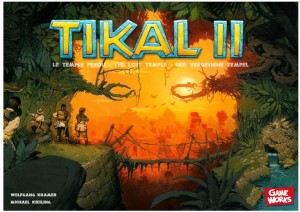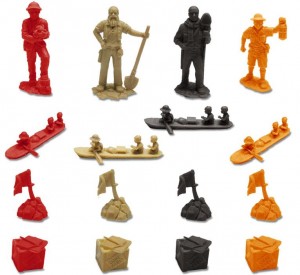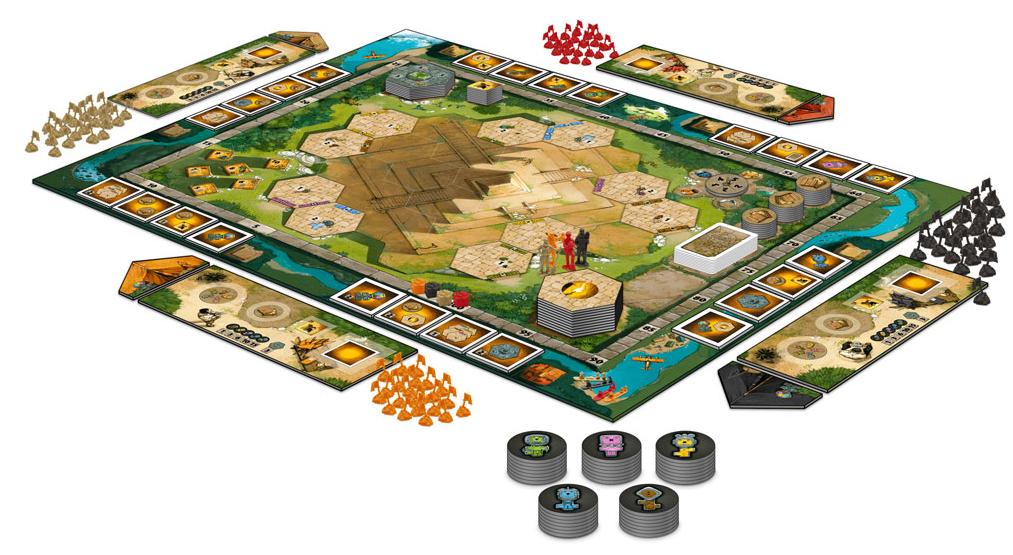On The Radar: Tikal II
Posted by James (admin) on September 28th, 2010
 The original Tikal is a classic game of archaeological discover where players send their explorers into the jungle to find tombs and collect treasure. Each player had an amount of action points each round that they could spend on a variety of activities, and the board consisted of hex tiles that would be revealed and placed by the players.
The original Tikal is a classic game of archaeological discover where players send their explorers into the jungle to find tombs and collect treasure. Each player had an amount of action points each round that they could spend on a variety of activities, and the board consisted of hex tiles that would be revealed and placed by the players.
The news that Tikal II was being released was quite unusual as there are few direct board games sequels and Tikal is some years old (winning the Spiel des Jahres in 1999). The images of Tikal II that were released looked very nice indeed. Cool looking little flags and this time the action is set in a single temple. Until now, the gameplay was a mystery but the rules have just been released.
In Tikal II, players reveal the insides of a temple by placing rooms (hex tiles). Each room has a few doors on some of its sides (all of the same colour) and a player can move their explorer through these doors if they have the matching colour key. If two different coloured doors are placed next to each then the player will need two keys (one of each colour) to be able to pass through. A player can excavate a room where they end their move which means they get to place one of their flags in the room and then score points equal to the number of doors of the same colour that they have placed their flag next to in the whole temple. For example, a player stops in a room with blue doors on its sides, so they will score 1 point for each blue door that any of their flags are next to. A player can never excavate the same room twice.
In addition to being inside the temple, players each have a boat. Each turn, the players move their boat around the temple and pick up an action tile. There is a limit on how far a boat can be moved but it’s quite long; however, there’s also a cost for each new circuit of the temple being made. The action tiles let a player perform several actions such as adding a new room to the temple, gaining a key, taking treasure, taking a special card (which give special abilities and potentially end of game bonus points), and so on. After performing the actions on the action tile, a player may then move their explorer in the temple.
As well as the explorer and the boat, each player has a base camp. This is a mini-board in front of them where they can store some of their findings to gain points. For example, players can put coloured keys in their camp for extra points but these can’t be used by their explorer to go through doors, and vice versa.
The game is played in two halves – the first half is played in clockwise order until all the action tiles are taken and then there’s a scoring round. Then, the second half is played in anti-clockwise order until all the action tiles are taken again and then there’s a final scoring round. To remind players which way the game is flowing, there is a triangular tent place on the left or right end of your camp mini-board which creates an arrow showing the playing direction. I think that’s a nice touch. Plus, there are lots of other small mechanics too such as selling treasure for points and then altering the price, secret doors and secret rooms, and a few more too.
 Tikal II is being created by the original game’s designers. Creating a sequel is a tricky business as the audience tends to want more of the same but still be just different enough – too similar and why have both (I’m looking at you Priests of Ra), but too different and then it’s not a sequel at all and people buy a game under false pretences. It’s the same with sequels in any genre – movies, videogames, books, music.
Tikal II is being created by the original game’s designers. Creating a sequel is a tricky business as the audience tends to want more of the same but still be just different enough – too similar and why have both (I’m looking at you Priests of Ra), but too different and then it’s not a sequel at all and people buy a game under false pretences. It’s the same with sequels in any genre – movies, videogames, books, music.
From reading the rules, I think Tikal II could be a proper and good sequel to Tikal – delivering a game offering the same amount of choices, discovery and collection in its gameplay but in a brand new wrapping with totally new mechanisms. It sounds like it could deliver a really great Euro game. I hope I’m right as I’m looking forwards to playing it.
James.
(You can read the rules on the Gameworks site.)


